|
|
|
|
| Open
stage is a place for Arts instructors to share ideas and showcase
their efforts in using technology in their teaching. Interviews
were conducted with each instructor. They talked about the innovative
ways technology is incorporated into their courses, and their perspectives
and experiences as teachers and researchers. These stories are full
of insights and inspiration. |
|
|
|
|
|
Andy's responses:
Why use technology?
(QuickTime, RealPlayer)
What are the challenges?
(QuickTime, RealPlayer)
Is this experience rewarding?
(QuickTime, RealPlayer)
|
|
| |
|
Learning
International Organizations with Multimedia
Interview
with Dr. Andy Knight and POLS468 students
|
| Andy Knight always strives for innovative teaching. He designed
and developed a multimedia course on the United Nations using
WebCT as the platform. The course web site consists of PowerPoint
lecture notes, video clips, maps and images, discussion boards,
online quizzes and web links. Students not only came to lively
lectures with the materials brought to life by various technologies,
they were also involved in a simulation of the UN Security Council.
Learning in this class has no boundaries. In interviews, students
in this class spoke of their experiences and of their appreciation
for an intellectually challenging and fun course. Andy also
talked about his own experiences. |
|
The course web site:
|
|
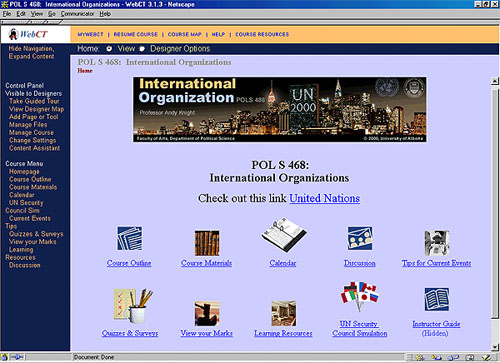
The primary purpose of the course web site was to supplement
the face-to-face teaching and to engage students more in their
own learning. Technology becomes an integral part of the whole
learning experience. Students are immersed in online discussion,
which may be a contiuation of or a spark for a class discussion.
Online quizzes helped students check their understanding of
the course materials and provided them with incentives to
keep track of their learning progress. Video clips used in
the lectures to highlight the UN's peacekeeping mission were
also available on the Web. Links to related web sites gave
students access to some key UN documents and encouraged them
to explore various topics.
|
| The
Simulation of United Nations Security Council |
|
Students unaminously agreed that the simulation
was the most exciting and rewarding experience they gained
from this course. The class was broken up into 15 caucuses
representing the 15 members of the UN Security Council (5
permanent members -- the US, UK, France, Russia, China, and
10 non-permanent members, including Canada). The task was
to reform the Security Council - making it more relevant to
the current international politic. The simulation was conducted
both face-to-face and online. Each caucus had an online forum
and received instruction and country mandate electronically.
All the caucuses were called to a plenary to negotiate and
work on the resolution. The course web site provided links
to the UN provisional rules of procedures, UN charter, and
other crucial documents to form a genuine environment for
this simulation and to support students' learning of decision-making
in the United Nations.
|

Technology will be in the 21st century classroom
(QuickTime, RealPlayer)
|

There are alternative avenues for you to express your
ideas.
(QuickTime, RealPlayer) |
|
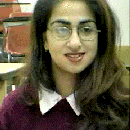
It was incredibly frustrating... but it was just a great
learning experience.
(QuickTime, RealPlayer)
|
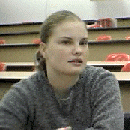
It was more about students learning from one another.
(QuickTime, RealPlayer) |
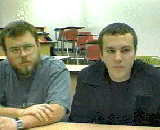
Discussion panel was very interesting and stimulating.
(QuickTime, RealPlayer) |
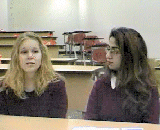
Everything is right there on
WebCT.
(QuickTime, RealPlayer) |
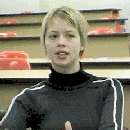
The images were so powerful... they are my favorites.
(QuickTime, RealPlayer) |
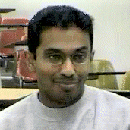
We can actually be there and debating with other countries'
representatives.
(QuickTime, RealPlayer) |
|
| Questions
for Andy: |
|
Andy did not hestitate to say yes when asked
if he found the time and energy he spent on implementing the
technology in his course rewarding.
"It brings happiness to my heart to see
my students learn the essential skills, to make passionate
speeches during the simulation, to show enthuasim and compassion
for the course" said Andy.
So what motivates Andy to try a different approach and why
does he venture into technological means in his teaching?
He thinks that traditional lectures are fine. However, teaching
downwards to students is one things, but it is another thing
to offer students the possiblility of playing a role in their
own learning. He believes that technology gives students a
different model or paradigm of learning, in which they take
control of their own learning. In other words, he sees his
course web site as a supplement to his lectures. He also believes
that individual students may have different way of capturing
knowledge. He wants to support and help everyone in different
way.
It was very challenging when Andy took this new approach
and brought technology into the class. The biggest challenge
is time constraint. According to Andy, it takes a lot of time
to put together a WebCT course, to design it from scratch,
to work out the summary of each chapter and lecture, and to
have the quizzes prepared in advance. All this takes time
and must be done prior to the course. He appreciates the support
he obtained from the Academic Technologes for Learning and
[Faculty of Arts] Technologies for Learning Centre. "To
me, that's my saving grace" he said. Another challenge
is to be able to imagine. What will the outcome be like? What
does an instructor wish to accomplish? Imagination and experimentation
are the keywords here. The final challenge was to keep on
top of the situation all the time. With the WebCT, class does
not end at a certainly time. Students are participating in
discussion off campus. As the instructor, Andy tries to respond
and interact with students as much as possible.
back to top
|
 |
|
|